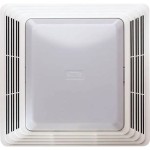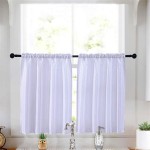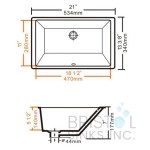Best Way to Paint a Bathroom Vanity
Painting a bathroom vanity is a cost-effective and relatively straightforward method to refresh the appearance of the space. Rather than replacing the entire vanity, which can be expensive and involve plumbing work, painting allows for a dramatic visual change with minimal disruption. Achieving a professional-looking finish requires careful preparation, the use of appropriate materials, and meticulous application techniques. This article outlines the best practices for painting a bathroom vanity, focusing on durability and aesthetic appeal.
Surface Preparation is Paramount
The longevity and quality of a paint job are directly proportional to the preparation undertaken beforehand. Inadequate preparation will inevitably lead to premature chipping, peeling, and an overall unprofessional appearance. The initial steps involve a thorough cleaning, sanding, and priming of the vanity surface. Each of these stages plays a crucial role in ensuring the paint adheres correctly and provides a durable finish.
Begin by removing all hardware, including knobs, pulls, hinges, and any other removable elements. Label each piece and store them in a secure location to prevent loss or confusion during reassembly. This allows for complete and unobstructed access to all surfaces of the vanity. Cover any surfaces that you don’t want painted with painter's tape. This includes countertops, walls, or the floor.
Next, thoroughly clean the vanity to remove dirt, grease, soap scum, and other contaminants. Use a degreasing cleaner specifically designed for painted surfaces. For particularly stubborn stains or buildup, a solution of trisodium phosphate (TSP) diluted in water may be necessary. Always wear gloves and eye protection when working with TSP and follow the manufacturer's instructions carefully. Rinse the vanity thoroughly with clean water to remove any residual cleaner and allow it to dry completely before proceeding to the next step.
Sanding is essential for creating a slightly roughened surface to which the primer can adhere. The grit of sandpaper to use depends on the existing finish. For glossy or heavily varnished surfaces, start with a coarser grit sandpaper, such as 120-grit, to dull the shine and remove the top layer. Work your way to finer grits, such as 220-grit, to smooth the surface and remove any sanding marks. For surfaces with a matte finish or minimal coating, starting with 220-grit sandpaper may be sufficient. Use a sanding block or orbital sander to ensure even pressure and avoid gouging the surface. Pay close attention to edges and corners, as these areas are prone to chipping if not properly prepared. After sanding, thoroughly remove all sanding dust with a tack cloth or damp cloth. Allowing dust to remain will compromise the adhesion of the primer and subsequently the paint.
Applying a primer is a critical step that should not be skipped, even if the existing finish appears to be in good condition. Primer serves several important functions. It seals the surface, provides a uniform base for the paint, and enhances adhesion, ultimately increasing the durability of the finished product. Choose a high-quality primer specifically formulated for wood or laminate surfaces, depending on the material of the vanity. Apply the primer in thin, even coats using a brush, roller, or spray gun. Allow the primer to dry completely according to the manufacturer's instructions before proceeding to the painting stage. Lightly sand the primed surface with a fine-grit sandpaper (320-grit or higher) to remove any imperfections and create an even smoother surface for the paint.
Choosing the Right Paint and Application Techniques
Selecting the appropriate paint and employing proper application techniques are key to achieving a professional and durable finish. The type of paint used will affect the appearance, durability, and ease of maintenance of the vanity. Similarly, the method of application will influence the smoothness and evenness of the finish.
For bathroom vanities, choosing a paint specifically formulated for high-moisture environments is crucial. These paints typically contain mildewcides and fungicides to prevent mold and mildew growth, which are common problems in bathrooms. Oil-based paints offer excellent durability and resistance to moisture, but they have a longer drying time, emit strong odors, and require mineral spirits for cleanup. Water-based acrylic or latex paints are more environmentally friendly, dry more quickly, have lower VOCs, and can be cleaned with soap and water. High-quality acrylic enamel paints offer a good balance of durability, moisture resistance, and ease of use, making them a popular choice for bathroom vanities.
Consider the desired sheen level of the paint. High-gloss paints are the most durable and easiest to clean, but they can also highlight imperfections in the surface. Semi-gloss paints offer a good compromise between durability and aesthetics. Satin or eggshell finishes provide a softer, more subtle look but may be less resistant to moisture and stains. Ultimately, the choice of sheen level depends on personal preference and the overall design of the bathroom.
The application technique can significantly impact the final appearance of the painted vanity. Brushes, rollers, and spray guns are the most common methods, each with its own advantages and disadvantages. Brushes are suitable for detail work and small areas, but they can leave brushstrokes if not used carefully. Rollers provide a smooth, even finish on larger surfaces, but they may not be ideal for intricate details. Spray guns offer the most professional-looking finish, but they require practice and proper ventilation, as well as investment in the equipment. Regardless of the chosen method, apply the paint in thin, even coats, allowing each coat to dry completely before applying the next. Multiple thin coats are preferable to one thick coat, which is more likely to drip, sag, or develop bubbles.
When using a brush, choose a high-quality brush with synthetic bristles, as natural bristles can absorb water and swell, leading to uneven paint application. Dip the brush into the paint, removing any excess paint by tapping it against the side of the can. Apply the paint in long, smooth strokes, following the grain of the wood. Overlap each stroke slightly to ensure complete coverage. Avoid applying too much pressure, as this can cause the paint to run or sag.
When using a roller, choose a roller with a nap that is appropriate for the paint and surface. A shorter nap is generally recommended for smooth surfaces, while a longer nap is better for textured surfaces. Dip the roller into the paint, rolling it back and forth on a paint tray to distribute the paint evenly. Apply the paint in a "W" or "M" pattern, overlapping each stroke slightly. Avoid applying too much pressure, as this can cause the paint to splatter or drip. If using a spray gun, refer to the manufacturer's instructions for proper setup and operation. Practice on a piece of scrap material before painting the vanity to get a feel for the spray pattern and paint flow. Apply the paint in thin, even coats, maintaining a consistent distance from the surface. Overlap each stroke slightly to ensure complete coverage.
Achieving a Durable and Professional Finish
The effort invested in surface preparation and paint application can be maximized by taking steps to protect the finish and ensure its longevity. This includes proper drying and curing, applying a protective topcoat, and reassembling the hardware with care.
Allow the paint to dry completely according to the manufacturer's instructions. Drying times can vary depending on the type of paint, humidity, and temperature. Avoid touching or using the vanity until the paint is fully dry. Curing is a process that occurs after the paint is dry, where the paint molecules continue to cross-link and harden. Curing can take several days or even weeks, depending on the type of paint. During the curing process, avoid exposing the vanity to excessive moisture or harsh chemicals.
Applying a protective topcoat can significantly enhance the durability and longevity of the painted finish. A clear topcoat provides an extra layer of protection against scratches, stains, and moisture. Choose a topcoat that is compatible with the paint used. Polyurethane topcoats are a popular choice for bathroom vanities due to their excellent durability and water resistance. Apply the topcoat in thin, even coats using a brush, roller, or spray gun. Allow each coat to dry completely before applying the next. Lightly sand the topcoat with a fine-grit sandpaper (320-grit or higher) between coats to remove any imperfections and create an even smoother surface.
Carefully reassemble the hardware, ensuring that each piece is properly aligned and securely fastened. Use new screws or bolts if the original ones are damaged or corroded. Consider replacing the hardware with new pieces to further enhance the appearance of the vanity. Clean any excess paint or fingerprints from the hardware with a soft cloth. Handle the painted vanity with care to avoid scratching or chipping the finish. Protect the surface with mats or coasters to prevent water rings or other damage. Regularly clean the vanity with a mild soap and water solution to remove dirt and grime. Avoid using harsh chemicals or abrasive cleaners, as these can damage the paint. Inspect the painted finish periodically for any signs of wear or damage. Touch up any areas that are chipped or scratched to prevent further deterioration.

How To Paint Bathroom Cabinets Secrets For A Perfect Finish

I Painted Our Wooden Bathroom Vanity What Learned Diy Tips Before Afters

How To Paint A Bathroom Vanity Ace Hardware

I Painted Our Wooden Bathroom Vanity What Learned Diy Tips Before Afters
.jpg?strip=all)
Painting A Bathroom Vanity Again Dream Green Diy

Step By Guide How To Paint A Bathroom Vanity Cabinet Love Grows Wild

How To Quickly Paint A Bathroom Vanity Cabinet Entri Ways

Paint Bathroom Vanity Countertop Sink So Easy A Piece Of Rainbow

How To Paint A Bathroom Vanity Helpful Tips Calypso In The Country

I Painted Our Wooden Bathroom Vanity What Learned Diy Tips Before Afters
See Also







